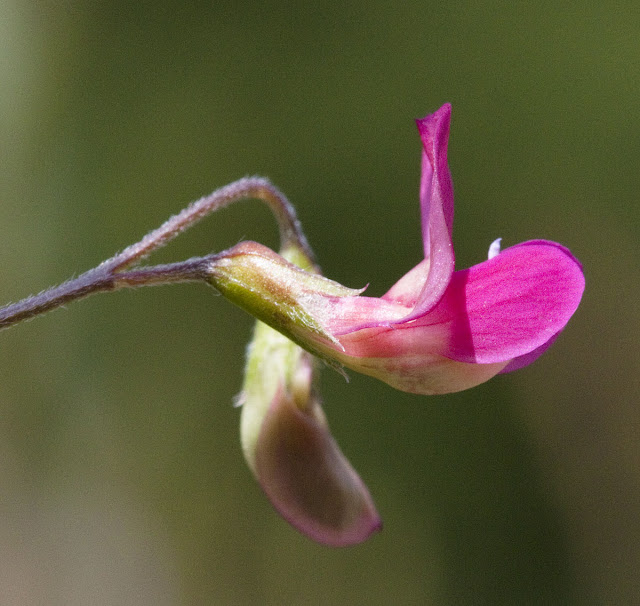 |
| Mike Edwards and the group in the meadow at Darrick Wood. 22 May 2011. |
It was a fascinating day. Mike started by telling us a little about the balance between woods and meadows, and how different parts of the same meadow might attract different kinds of creatures, depending on how moist or dry they were and what plants grew there. He was passionate about biodiversity — for good and practical reasons.
Although the meadow was full of grass, there were so many other plants that to call it just a stretch of grass would have been very misleading. The most visible flowers were buttercups, concentrated towards the edges, and ox-eye daisies, in swathes through the centre. Scattered throughout was a pink flower, grass vetchling, with just one or two flowers on each stem. The yellow rattle shown below is sometimes called the hay rattle, because when the fruit dries, it rattles, and that is the right time to make hay.
 |
| A Roesel's bush-cricket, Metrioptera roeselii, on the net, cleaning its antenna. Darrick Wood, 22 May 2011. |
From here on, the event consisted largely of people bringing things back to Mike for identification, and asking about their behaviour and modes of living.
At this point we were getting mostly flies and beetles of many sorts. Then we pulled up some clumps and took them apart over white trays to see what was in the earth. A coarse sieve helps, but we only had one. My tray had mostly ants, and some crickets that jumped off at once rather than wait to be examined, but there were always people finding interesting things nearby.
 |
| Sifting tussocks of grass onto a tray. Darrick Wood, 22 May 2011. |
Further down the field, by the edge of the wood, we took up more clumps, this time tussocks of long grass. I found many more ants, a beetle larva, and one of the few things I recognised, a young earwig. One of the group found a lacewing larva, looking like a tiny gooseberry or a miniature green hedgehog.
Other invertebrates I have not yet mentioned included several species of bumblebee and hoverfly, some day-flying moths, hoppers, cutworms, weevils, picture wing flies, tachinid flies, sawflies, rove beetles. There were some wolf spiders carrying around their egg sacs. I saw — and caught, then released — both a male and a female common blue butterfly, pretty creatures.
 |
| Yellow rattle, Rhinanthus minor, at Darrick Wood. 22 May 2011. |
I was interested to see that particular types of beetle that I had found on other local commons also turned up frequently here. They must become common over the whole area for their season. For example, the red-tipped flower beetle, Malachius bipustulatus, and a soldier beetle called Cantharis rustica.
I took with me some photos of plants and creatures I had not yet identified and Mike told me several of them on the spot. My biggest surprise was to be told that what I thought was a bumble-bee was actually a hoverfly that imitates a bee. I have seen bee flies before, yellowish furry creatures, but this one, Eristalis intricarius, was mostly black and not a relation.
Once again, Judy was helpful in identifying the plants I saw. It's a real pleasure to go around with people who know so much.
Some more images from the day:
 |
| The meadow at Darrick Wood, showing how much of it is not grass. 22 May 2011. |
 |
| Flower of the grass vetchling, Lathyrus nissolia. Darrick Wood meadow, 22 May 2011. You can see these in the low-level shot above; there is one at the lower left. |
 |
| Sloe bug, Dolycoris baccarum, on the edge of the meadow at Darrick Wood. 22 May 2011. |
 |
| Tortoise bug, Eurygaster testudinaria, on the edge of the meadow at Darrick Wood. 22 May 2011. |
No comments:
Post a Comment